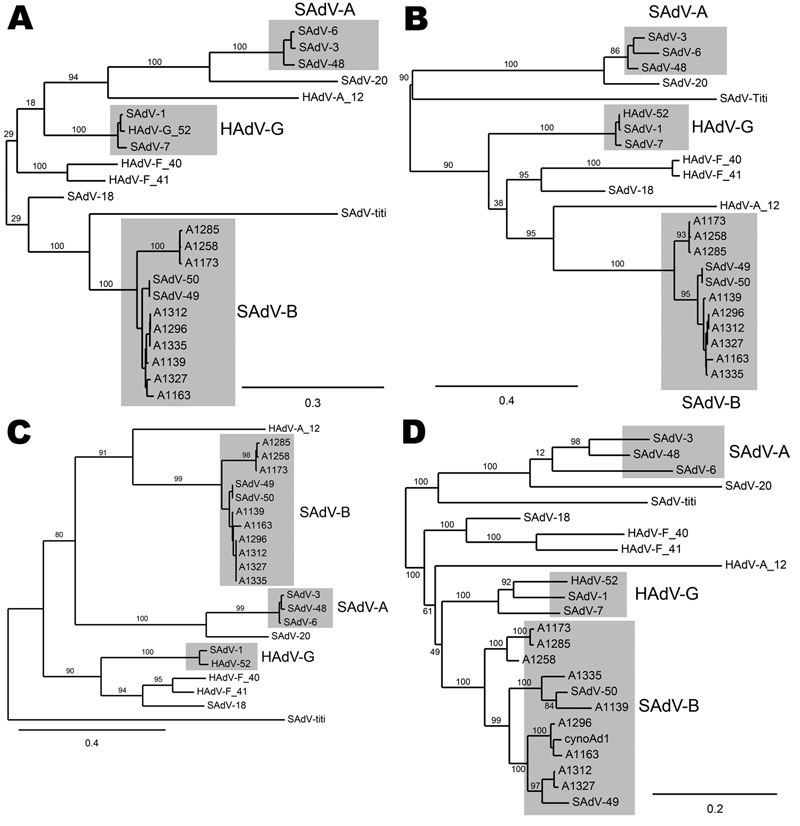Volume 18, Number 7—July 2012
Research
Adenoviruses in Fecal Samples from Asymptomatic Rhesus Macaques, United States
Figure 1

Figure 1. . . Phylogenetic trees of the genes coding for A) DNA polymerase, B) E4 34K, C) E1a, and D) hexons of macaque adenoviruses identified in study of prevalence of adenoviruses in fecal samples from rhesus macaques, United States. Members of the human adenovirus (HAdV) species HAdV-A (HAdV-12), HAdV-G, and HAdV-F that are thought to have the closest phylogenetic proximity to macaque adenoviruses are included for comparison. Branch support values are indicated. Simian adenoviruses (SAdV) SAdV-1 and SAdV-7 have been grouped together with HAdV-52 into HAdV-G; the other macaque adenoviruses (except for SAdV-18, SAdV-20, and the titi monkey adenovirus) have been grouped into SAdV-A and SAdV-B. SAdV-18 is seen to be closely related to HAdV-F (HAdV-40 and HAdV-41) in all the trees. Scale bars indicate number of substitutions per site.
1Current affiliation: Crucell Holland, Leiden, the Netherlands.